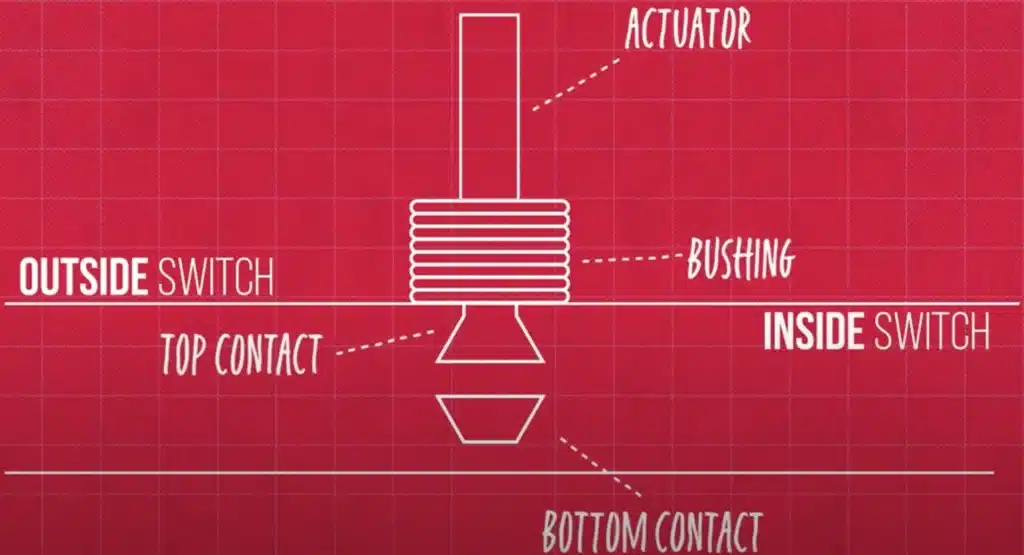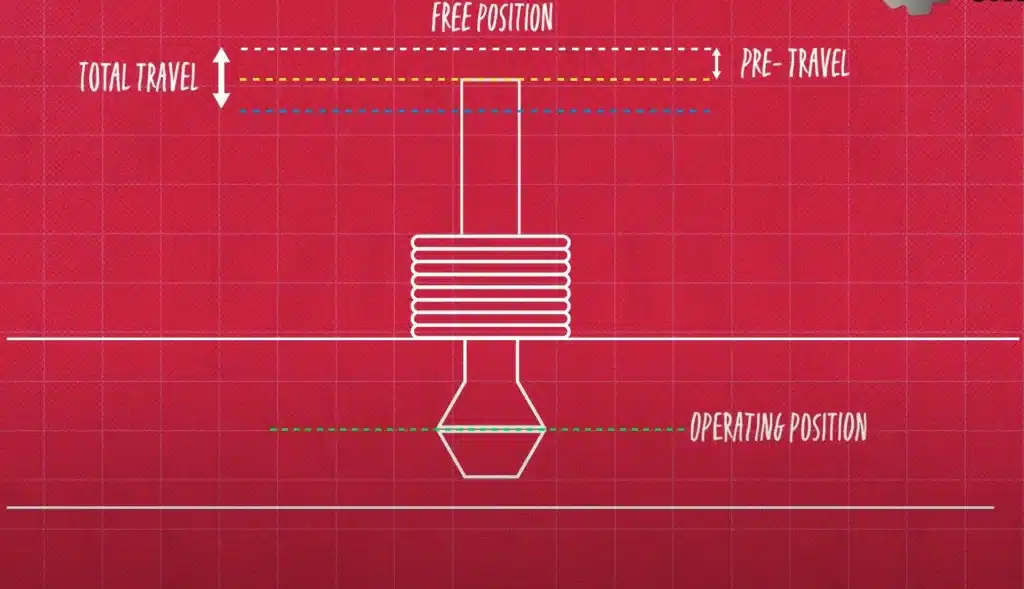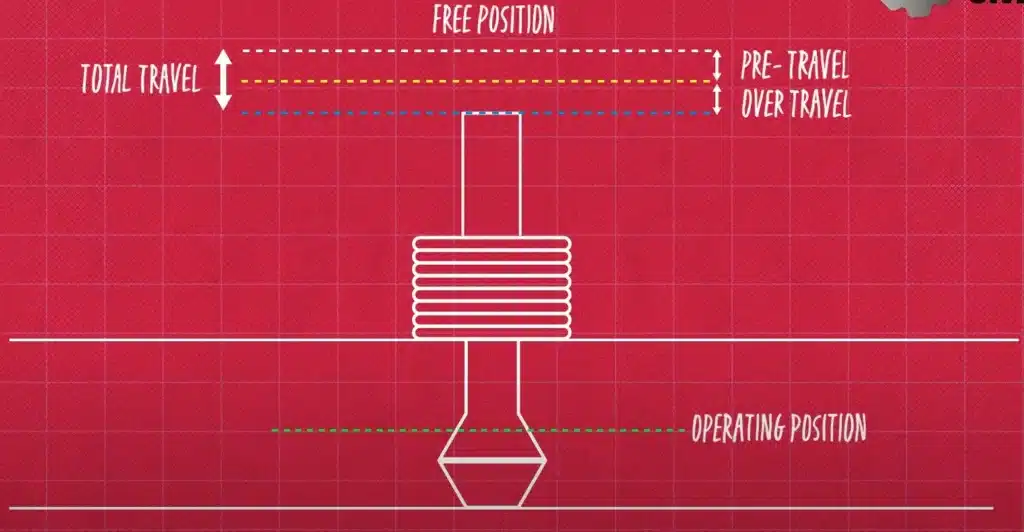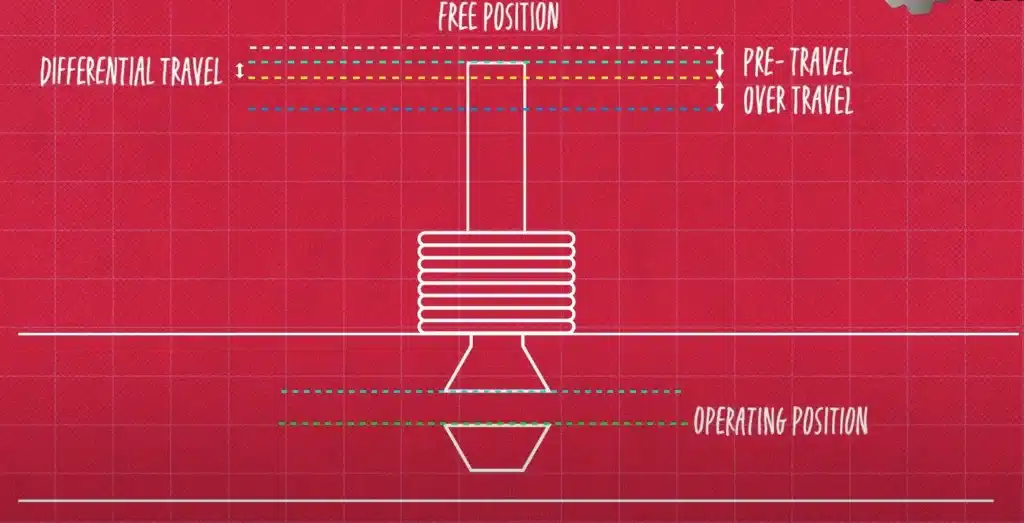What is travel? You’ve most likely heard such terminology as switch pretravel, overtravel and even differential travel, but what do these all mean? Let’s get down to basics.
Switch Pretravel, Overtravel and Differential Travel
Let’s start by looking inside a typical pushbutton switch. The switch shown below is currently in its rest position. Here we can see the actuator and the bushing on the outside of the switch, as well as the two contact points on the inside.

Total travel refers to the total distance the actuator moves to change the electrical contact position to operate the switch properly. Pre-travel is the distance which the actuator moves from its free position to its electrical contact position. It’s the distance required to move in order for the contacts to change state, like from OFF to ON. For multiple throw switches, this may apply to the changing of throws.

Overtravel is the distance between the electrical contact position and the full, allowable travel position to which the actuator can be moved. Too much overtravel can reduce a switch’s life, so switch manufacturers consider the amount of bending applied to the internal spring mechanism. All switches can tolerate a certain amount of overtravel, and some are provided with a special mechanism that allows a very long overtravel without damage.

Differential travel refers to the distance from the make points, or the “on” position, to the release point, or the “off” position. Depending on the switch function, it could be “off” to “on” or one pole to the other. For multiple throw switches, this may apply to the changing of throws. As an example, if a switch has multiple actuators or buttons, the differential travel may refer to the variation in distances each actuator needs to travel in order to activate its respective set of contacts.

Switch Pre-Travel
Definition: Pre-travel in an electromechanical switch refers to the distance the actuator (such as a button or lever) must be pressed or moved before the electrical contacts within the switch start to close or make contact.
Example: In a pushbutton switch, pre-travel is the distance the button travels from its resting position to the point where the internal contacts begin to make contact, completing the electrical circuit.
Switch Overtravel
Definition: Overtravel in an electromechanical switch is the additional distance the actuator can be pressed or moved beyond the point where the electrical contacts have already closed.
Example: Following the previous example, overtravel in a pushbutton switch would be the distance the button can still travel after the contacts have closed, providing a margin for continued physical movement without affecting the electrical state.
Switch Differential Travel
Definition: Differential travel refers to the difference in travel distances between two related components within the switch.
Example: If a switch has multiple actuators or buttons, the differential travel may refer to the variation in the distances each actuator needs to travel to activate its respective set of contacts.
In summary, pre-travel is the initial movement required to initiate a switch’s action, overtravel is the extra movement possible after the switch has been activated and differential travel refers to variations in travel distances within a multi-component switch.
The specific terminology might vary based on the manufacturer or industry standards, so it’s always a good idea to refer to the technical documentation provided by the switch manufacturer for precise definitions.
